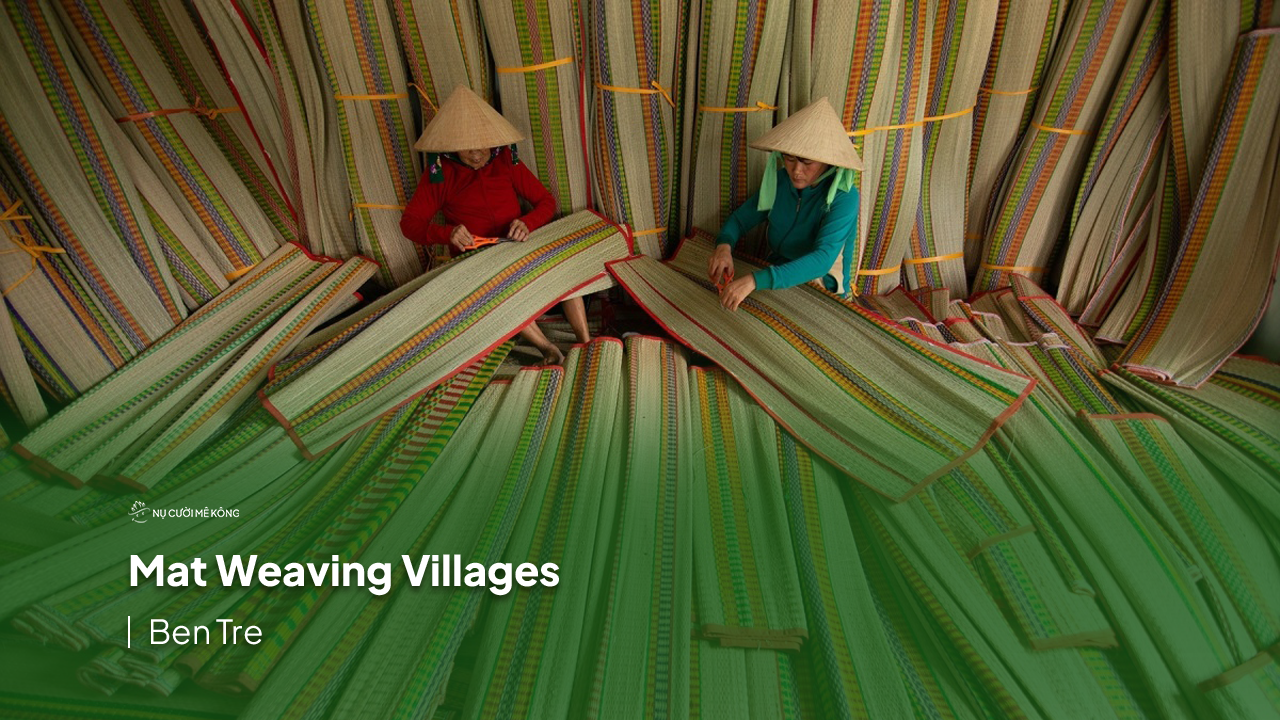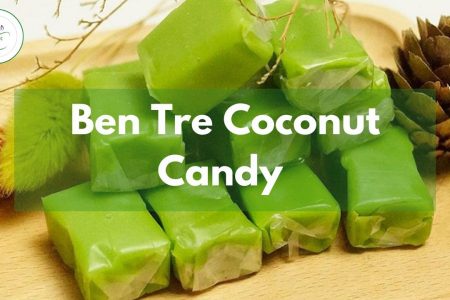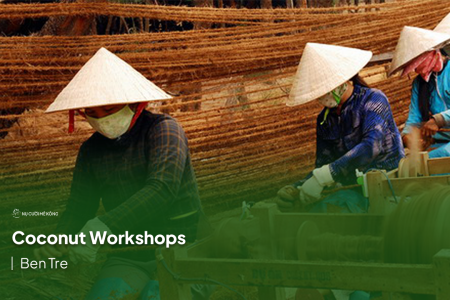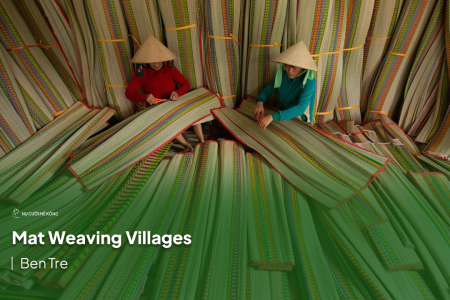Mat weaving holds deep cultural significance in the Mekong Delta region. Mats are essential elements of daily life, used for sleeping, sitting, and as floor coverings. They also play a role in various ceremonies and rituals, making them an integral part of local culture. There are several mat weaving villages in Ben Tre province.
An Hiep commune is renowned for their traditional handicraft mats. Villages in the commune have expertise in weaving mats, particularly the iconic sedge mats (also known as “mat grass”). These mats are not only essential household items but also significant cultural symbols in the Mekong Delta.

Location
An Hiep Mat Weaving Villages are a cluster of picturesque villages situated in Chau Thanh district, Ben Tre province. Traveling more than 90 km from Ho Chi Minh City, through many roads surrounded by a huge number of coconut trees, tourists arrive at Mat Weaving Villages. Visitors can get there by coach or scooter.

Best time to visit there
The best time to visit An Hiep Mat Weaving Village largely depends on tourists’ preferences and the weather conditions. It is highly recommended that tourists should visit there in the dry season from November to April. At this time, temperatures are more comfortable for outdoor activities and it might be suitable for those who enjoy warmer weather. The rainy season lasts from May to October in the Mekong Delta, visiting during this season is still possible. However, visitors may encounter heavy rainfall and occasional flooding, which can affect travel plans and outdoor activities.

History of An Hiep Mat Weaving Villages
The village was established in the 1960s. Over several decades of development, the traditional craft of mat weaving has gone through ups and downs. Now, they have been preserved and given chances to develop. Although mats from Ca Mau province are very popular and famous, mats made by weavers in An Hiep have achieved success.

In Ben Tre province, mats are made from sedge plants, but it is not a region known for cultivating this plant. Local people realized that there was a type of wild plant (named ‘u vu’ in Vietnamese) that can be woven into mats. They began making mats from this plant and the products were so attractive and durable.

However, it is just a wild plant and cannot be intentionally grown, so people had to go to other provinces to purchase sedge plants. Along with mats made from sedge and u vu plants, the locals experiment with water hyacinth.
How to weave a mat
Creating a beautiful and durable mat requires extensive and meticulous work. Artisans go through many stages to weave a mat from selection of raw materials, drying process to weaving. Firstly, weavers need to collect the sedge plants and trim them to a uniform length.

After that they lay out the trimmed fibers on a drying rack or a clean, dry surface. The materials are thoroughly dried by the sunshine. This step helps prevent mold and mildew in the finished mat.

The next step is to set up the warp. In this stage, artisans have to secure one end of the prepared fibers to the base. These fibers, known as the “warp”, will serve as the foundation for weaving. After making a frame for a mat, the craftswoman starts to weave. It takes from a few hours to several weeks to make a mat because it depends on various factors. Moreover, it often requires skill and practice to create high-quality mats with intricate patterns.

Therefore, when visiting the villages, tourists can see how the locals weave mats. They also have a chance to immerse themselves in the world of mat weaving. Tourists can tour workshops, observe the weaving process, and even participate in weaving sessions under the guidance of skilled artisans.

Some tips for tourists when they visit Ben Tre
- Tourists can get to Ben Tre by coach or motorbikes.
- It is recommended that tourists should rent a scooter or bicycle to explore the charming place by themselves.
- If you want to have the best experience in Ben Tre, you should take a look at the Ben Tre tour – Unblock Secrets of the “Capital” of Coconuts
Source: Ben Tre wikipedia









0 Comment